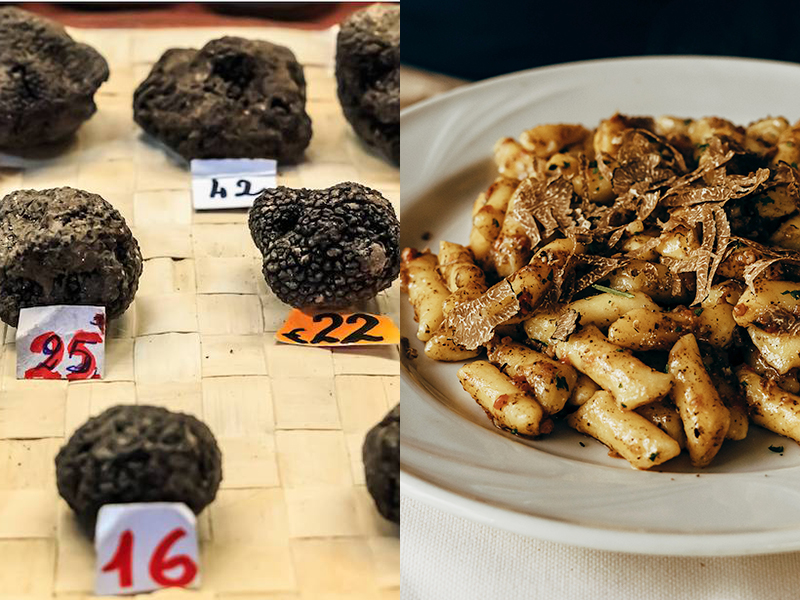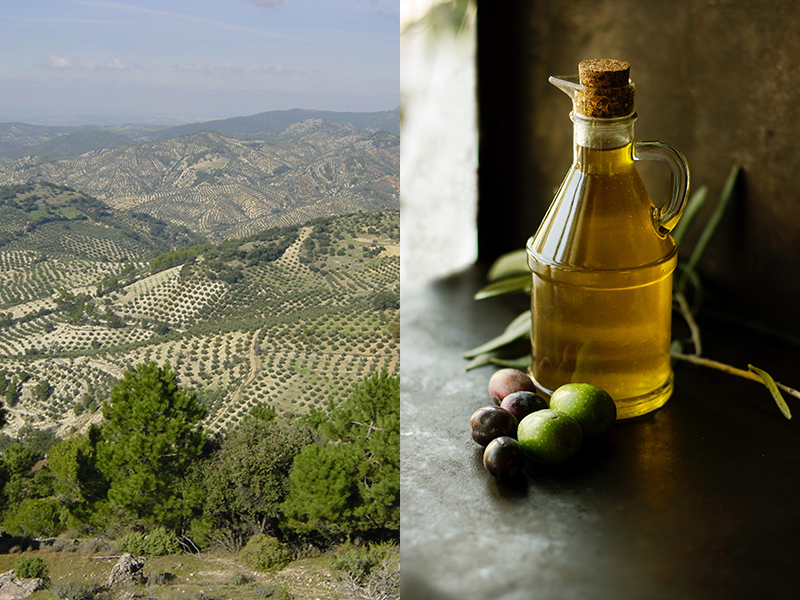
In the Andalusian region of Spain, olive orchards are so widespread that people have taken to calling it the mar de olivos—the sea of olive trees. The region’s olive oil is known for its light, fruity taste. Thousands of kilometers away, the verdant hillsides of Ethiopia are renowned for the complex, flavorful coffee beans they produce.
All over the world, the cultivation of food decorates the fabric of our landscape.
Yet warming temperatures are remaking our surroundings—and with them, our culinary world. The cultivation of crops is shifting northward or to higher elevations. Just like animals, some crops are losing ground to climate change, whereas others are gaining it.
Here we take a look at several winners and losers of global delicacies over the next century.
Loser: European Spirits

One key ingredient to the potent spirit absinthe is the botanical Artemisia genipi, commonly called wormwood, which grows in high alpine environments.
A study in Frontiers in Ecology and Evolution found that botanicals used in absinthe, eau de vie, and traditional medicines are at risk of losing habitat. The plants develop at the foot of melting glaciers, where ice has recently retreated. But if the glaciers retreat too quickly, competition among plants could reduce the diversity of plant life in the glacier’s shadow.
The scientists combed through data from four locations in the Italian Alps and saw that more than half of the 117 species present were affected. In fact, 20% of species face extinction locally. If the melting continues, the authors warn that wormwood faces extinction at these sites. If that were the case, the Green Fairy will have to find her A. genipi elsewhere.
Winner: Czech Truffles

Truffles are a rare delicacy—fungi with intense, earthy flavors served in risottos, soups, and other mouth-watering creations. Truffles sell for hundreds of dollars per kilogram, and some farmers may be about to win the jackpot.
Climate change in central Europe will increase the appearance of one species of truffles, Tuber melanosporum (Périgord truffle), in the Czech Republic, according to a study in Scientific Reports published last year.
Because of more favorable factors encouraging truffle growth—like temperature, precipitation, elevation, and soil pH—the area suitable for Périgord truffles will expand by 2050. Farmers collect truffles by planting trees that the fungi like (oaks, hazels, spruces, and pines) and using pigs or dogs to sniff out truffles when they appear. Because cultivation can take decades, now may be the right time to cash in on truffles, the authors write.
Loser: Spanish Olive Oil

By 2100, the output of southern Spain’s olive oil could drop by 30% because of changing climate. That’s bad news for Andalusia, which produces a third of the world’s olive oil.
Olive groves in the region are threatened by warmer winters and reduced rainfall by the end of the century. Researchers from the University of Cordoba in Spain and the Research Center for Geo-Space Sciences in Portugal modeled how different species of olive trees will fare with shifting environmental conditions. They found that although widespread varieties like picual and hojiblanca will be more resilient, the local nevadillo variety in Sierra Morena will likely disappear by 2100, according to their work published in Science of the Total Environment last year.
Winner: Canadian Wine

Tourists flock to Tuscany and Napa Valley for wine tours, but what if the next big destination is somewhere a little farther north?
In just 40 years, the bitter cold winters in northeastern Canada may be just right for European wine varieties. Freezing temperatures are giving way to more temperate weather, meaning that frigid temperatures won’t harm more delicate grapes.
Pinot noir could have a 70%–90% chance of favorable growing conditions in Quebec by 2050. In the nearby Estrie region, which borders northern Vermont, there could be a 70% chance of favorable growing conditions for European grapes. Although the industry is still in the early stages, wine tycoons be warned.
Too Soon to Call: Ethiopian Coffee

The seed responsible for the most popular coffee in the world, arabica, originated in the Ethiopian highlands. But its homeland is in trouble: A study in Nature Plants predicts that 39%–59% of the country’s low-elevation coffee cultivation is at risk. The range depends on how much more greenhouse gas emissions humans put into the atmosphere.
Yet by restoring previously forested areas and introducing new trees, the country could make the highlands the homeland of coffee once more. Although warm temperatures will endanger plants in the lower foothills, warmer days could open up 4 times the amount of growing area for coffee at higher elevations.
If that were the case, arabica would survive the next big climate swing. We can only hope that other delicacies we hold dear get so lucky.
—Jenessa Duncombe (@jrdscience), Staff Writer
This story is a part of Covering Climate Now’s week of coverage focused on “Living Through the Climate Emergency.” Covering Climate Now is a global journalism collaboration committed to strengthening coverage of the climate story.
Citation:
Duncombe, J. (2021), Five culinary winners and losers of climate change, Eos, 102, https://doi.org/10.1029/2021EO157086. Published on 16 April 2021.
Text © 2021. AGU. CC BY-NC-ND 3.0
Except where otherwise noted, images are subject to copyright. Any reuse without express permission from the copyright owner is prohibited.

